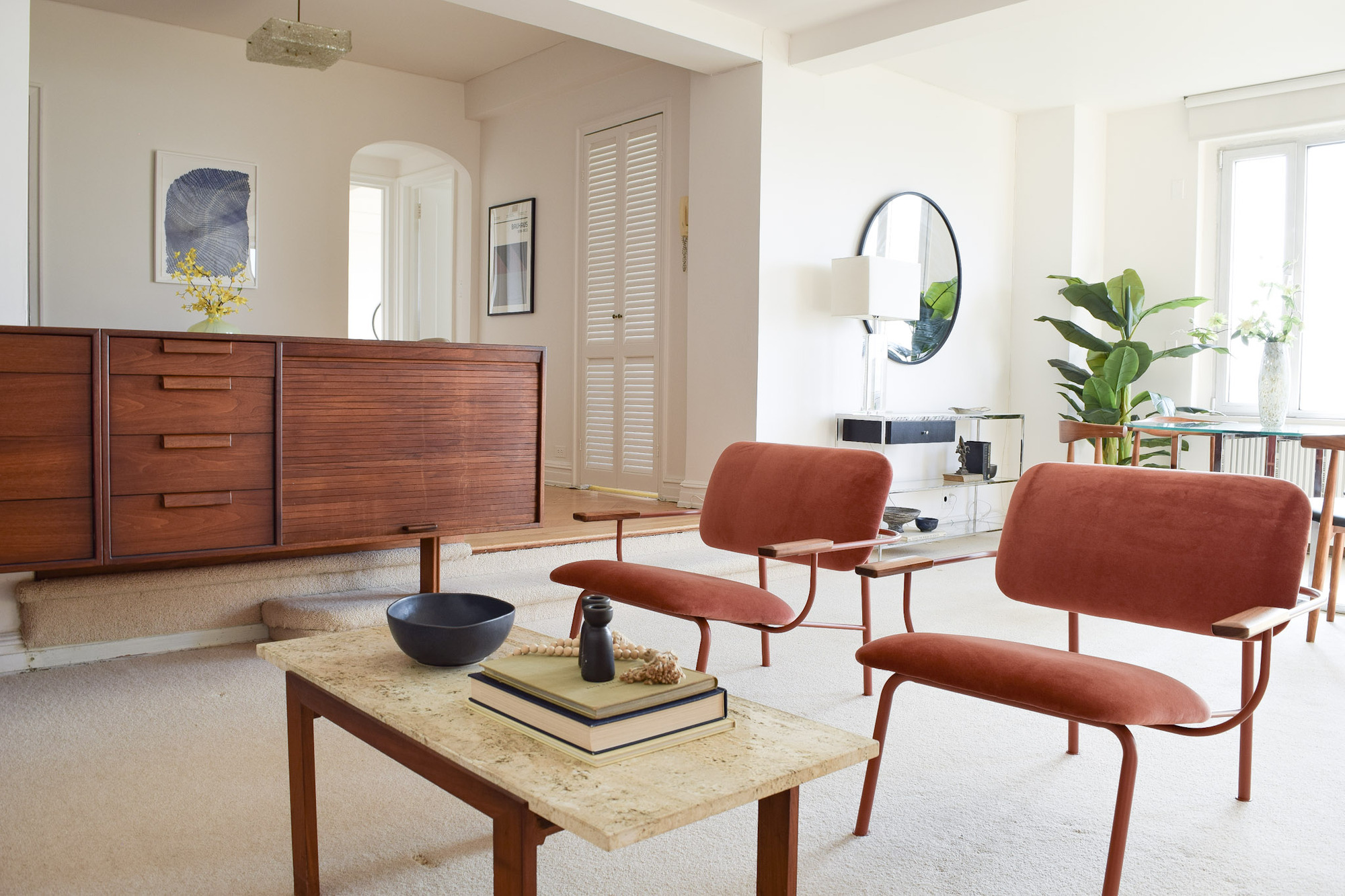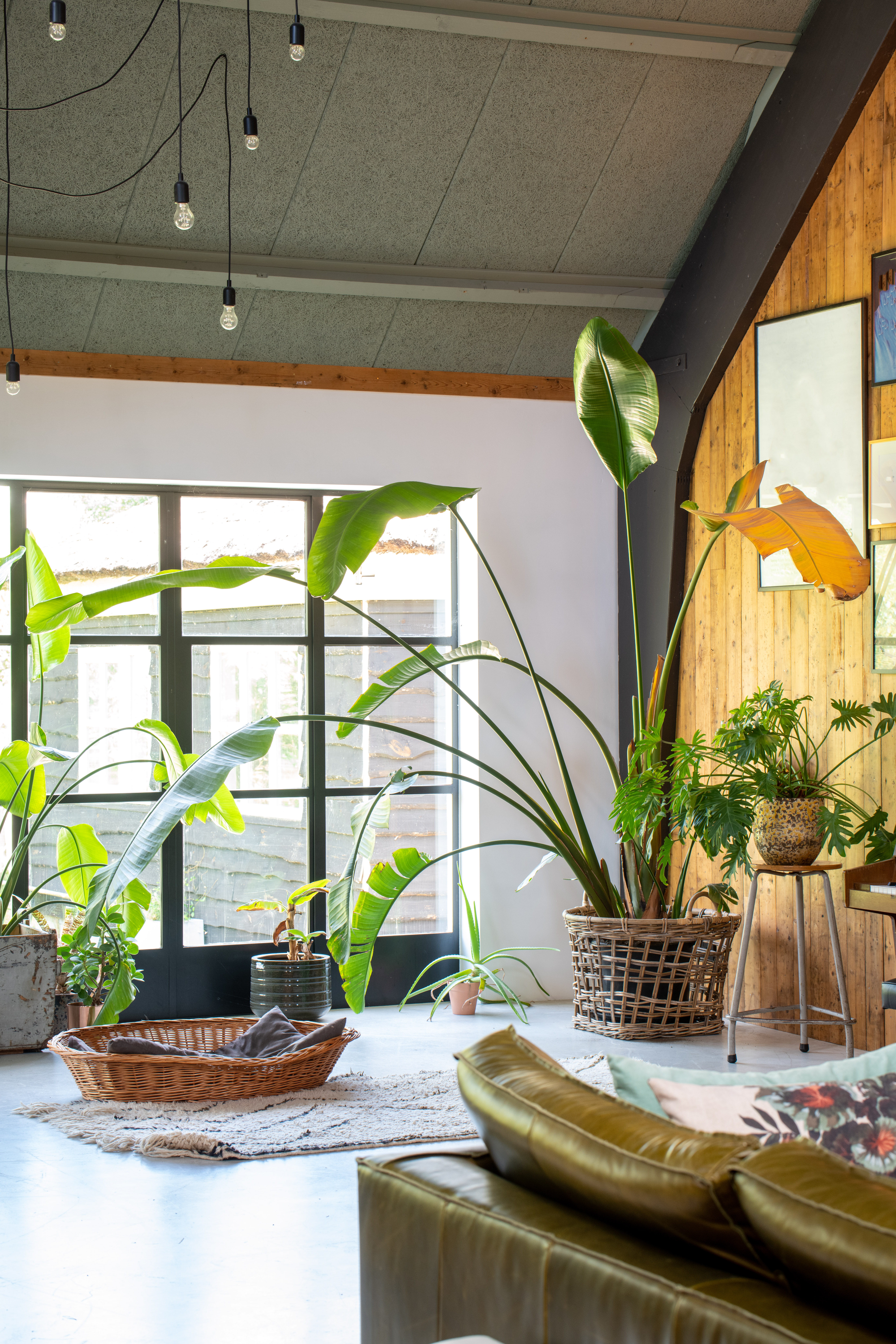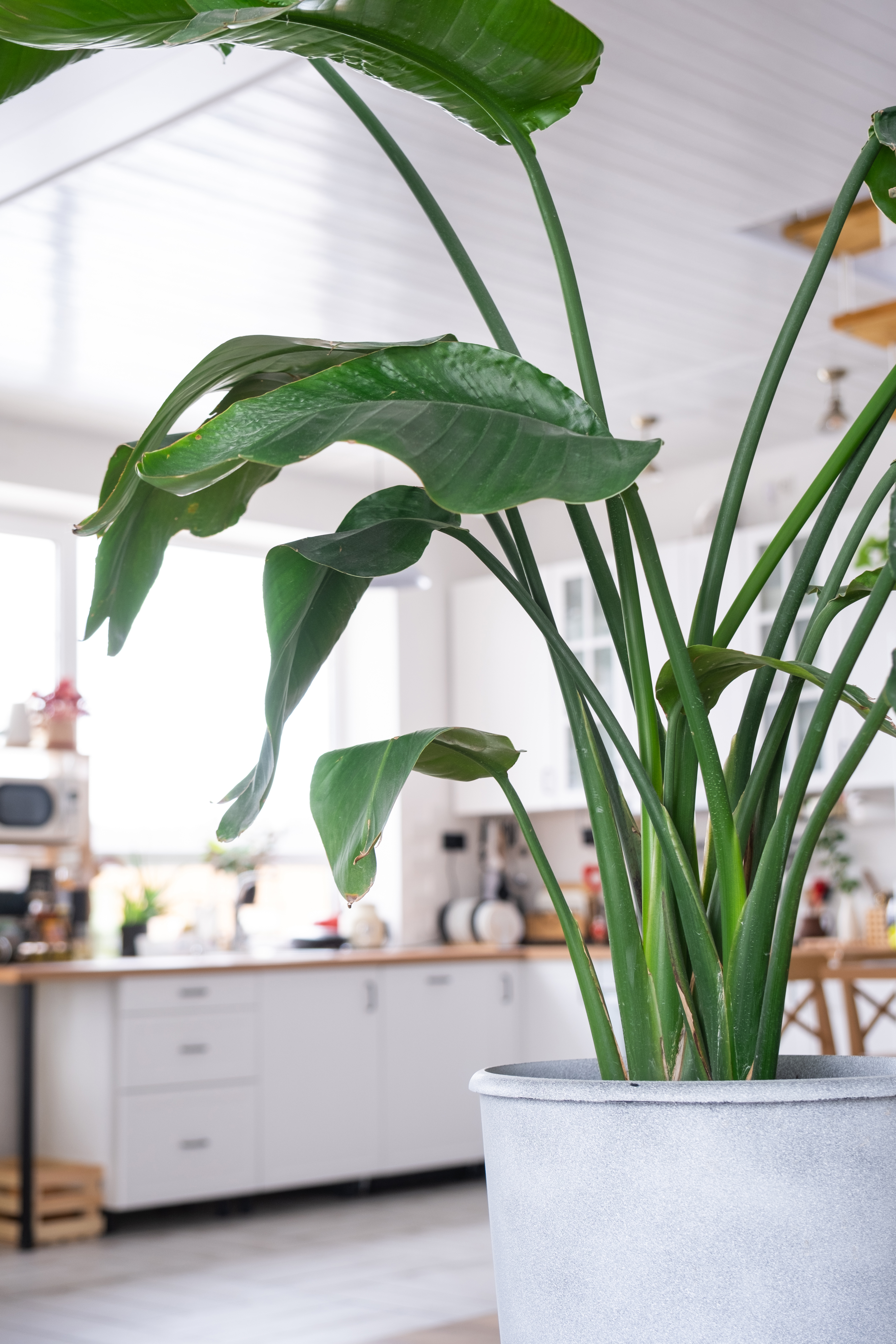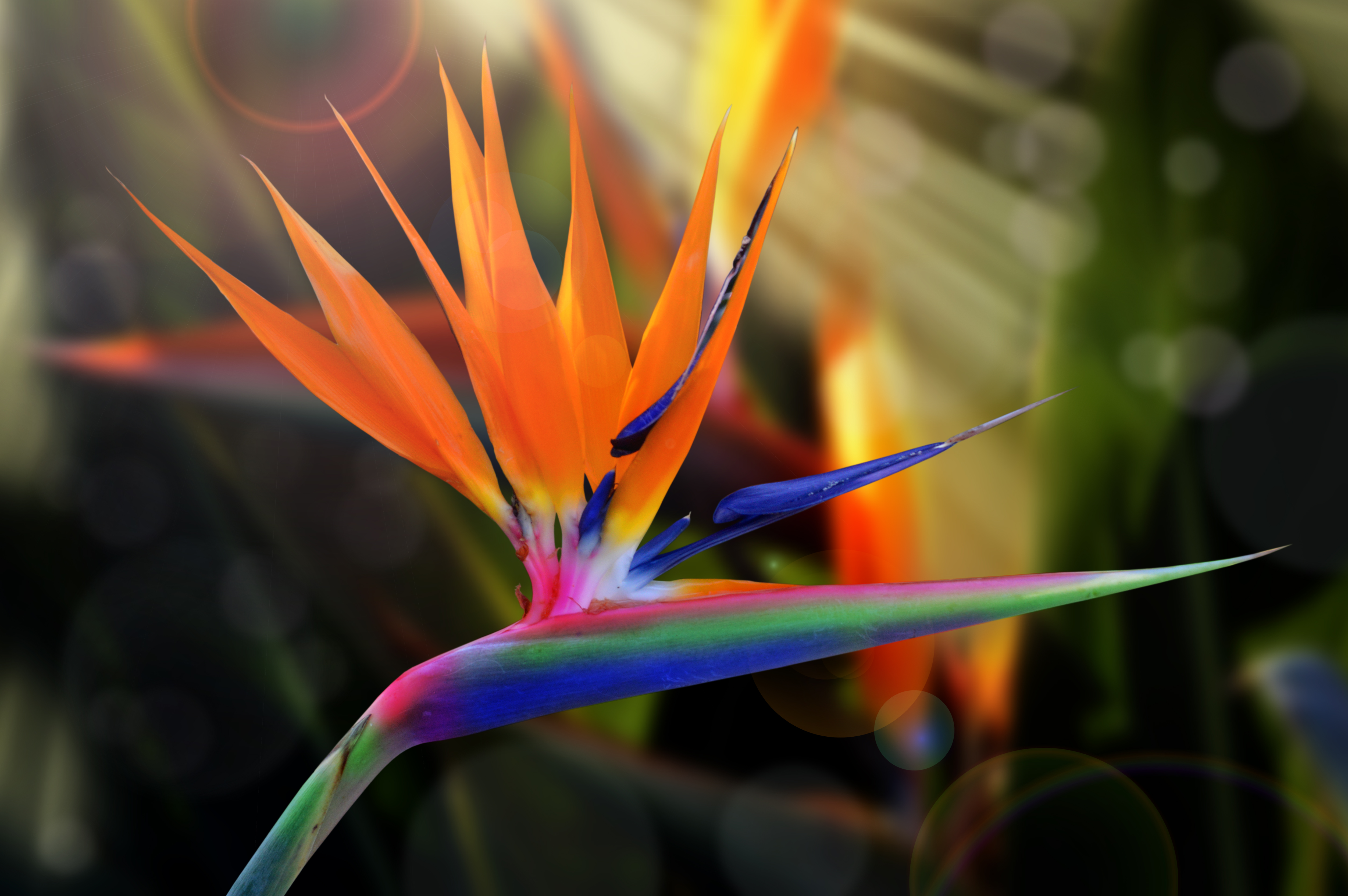
As we make the yearly shift to move indoors, we're not yet ready to hang up our gardening gloves and call it a day. In fact, we find it all the more important to get some greenery thriving indoors for that earthy ambiance that's needed over winter.
Lucky for us, there are plenty of tropical flowers to grow indoors that fit the bill perfectly. And today, we're shining the spotlight on a beloved outdoor grow that can actually be grown indoors — the ever so beautiful, bird of paradise, also known as Strelitzia reginae. Now, this variety may not be the exact same one you find in outdoor gardens, but the indoor species is no less charming.
To help us understand more about how to grow a bird of paradise plant indoors and keep it spritely and alive in the process, we have collected gems of advice from the experts who know best. So if you're missing your garden over the winter, why not bring this plant inside and relish its beauty in the meantime?
How to Grow Bird of Paradise

In conversation with Paris Lalicata, plant expert at The Sill, she tells us that growing bird of paradise at home requires special attention to the atmosphere it lives in. Here are some of the most important factors to consider when adopting this pretty houseplant.
Light: As one of the best plants for a lush indoor garden, Paris tells us that bird of paradise thrives in bright, indirect light, needing a nice sunny spot with little obstructions indoors. "It can handle direct morning sunlight, which helps encourage healthy, strong growth," she notes. "However, avoid too much harsh midday sun from a South window, as it can scorch the leaves."
Paris tells us it's ideal to place it directly in an east or west-facing window, but a slightly diffused south window can also work. "Avoid north-facing windows as they usually can’t provide enough natural lighting for a bright light plant like this," she warns. "If you don’t have the means of natural lighting, supplement with indoor grow lights."
Environment: Being a tropical plant, Paris tells us that the BOP will prefer a warm, humid environment. "Place in an area where temperatures are between 65-85°F, but remember that it will grow faster in warmer conditions," she says. "Avoid placing it near drafts or cold windows in winter."
She also tells us high humidity keeps its leaves lush and can also encourage leaves to unfurl faster, so using a humidifier will be beneficial and the best way to localize humidity consistently around the plant.
Water: Paris explains that it's best to water your bird of paradise once the soil has mostly dried out between waterings, preferably 50-70% of the way down. During spring and summer, she finds that it typically needs more frequent watering due to the rise in temperatures and daylight hours.
"In fall and winter, reduce watering as it grows more slowly, allowing the soil to dry out between waterings but refrain from letting it remain dry for too long," she advises. "At the time of watering, make sure you are evenly and thoroughly saturating the soil."
Soil/Potting: Paris tells us you can use any organic, well-draining potting mix to pot your BOP. She encourages plant parents to choose a pot with drainage holes that are one to two inches larger than its root ball, as these plants like a little room to spread out but still feel snug.
"If your BOP grows fast you may need to repot it every two to three years, but if it’s slow growing you can go longer but provide fresh soil occasionally," she says. "The BOP has sensitive roots so be gentle at the time of potting."
How to Care for Bird of Paradise

Anastasia Borisevich, plant expert at Plantum tells us the bird of paradise flower is a showstopper you cannot take your eyes off. "With its bright flowers resembling a bird’s beak and silky green foliage, this plant is a must-have for your indoor jungle," she notes.
Bird of paradise may be one of the best indoor plants that create shade, but to properly get those gorgeous leaves tall and strong, it's important to properly care for them.
Watering: "Give your plant a drink when the topsoil dries off to around 0.5 inches (1 to 2 cm) about 2 or 3 times a week," she advises. "Use only soft, room-temperature, settled water for watering."
Anastasia also recommends keeping the soil constantly moist but warns gardeners to avoid waterlogging, which may cause root rot. She suggests removing excess water from the plant saucer or outer planter to prevent that.
Humidity and Temperature: According to Anastasia, the optimal humidity for your bird of paradise flower is about 70%. Other than misting, she tells us you can also use a humidifier.
"Don't put the pot near heating appliances, as they dry out the air," she adds. "Avoid drafts and don't let the temperature drop below 68°F (20°C)."
Sunlight: She tells us it's important to avoid exposing your plant to direct sunlight. "I also recommend providing your plant with bright, filtered light for healthy growth," she says.
Fertilizer: Gardening expert Tony O'Neill advises plant parents to feed bird of paradise on a monthly during spring and summer with a balanced liquid fertilizer. "This will help promote steady growth and potential flowering," he says.
This Bird of Paradise Fertilizer from Amazon is a bargain buy that's made specifically to care for this lovely houseplant.
Sometimes, all you need is a beautiful indoor plant to brighten up a space. And we can't think of a more glamorous grow than bird of paradise to adopt into your indoor jungle.
And while its stunning leaves are reward enough for some plant parents, if you're a fan of the species' famous blooms, worry not. For in the right conditions and with appropriate care the rare sight of an indoor bird of paradise abloom may bless your space.
FAQs
What are the common pests & diseases that affect bird of paradise?

According to Paris, the BOP is susceptible to pests like mealybugs, and spider mites. When you notice any of these pests on your plant, she tells us that it's best to isolate them from the rest of your collection to prevent spreading them to other plants.
"You can bring it to a sink or shower and apply sharp sprays of water to the tops and undersides of the leaves as this helps to dislodge any pests," she says. "Once the plant dries, you can treat it with an organic insecticide following the application rates provided."
We recommend adding this Bonide Captain Jack's Neem Oil Insecticide from Amazon to your gardening kit for the best results. After the pests are gone, Paris tells us you can proactively treat them on a bi-weekly to monthly basis with the insecticide to catch any outbreaks before they get bad.
When it comes to bird of paradise diseases to look out for, Paris tells us that root rot and fungal leaf spots can be common for the plant but are easily avoided. "If your plant has fungal leaf spots, prune off any infected leaves and treat the plant with an organic fungicide," she advises. "Keep the leaves dry by avoiding misting or splashing water onto the leaves, and maintain an optimal environment with good light and airflow."
For root rot, she suggests taking the plant out of its planter, disposing of the soil, and pruning off any rotted/black roots. She tells us you can then can soak the roots in the fungicide for 10 to 15 minutes, and then repot it with fresh potting mix in a sterilized container.
"To avoid root rot, give your BOP plenty of light, well-draining soil, and avoid overwatering," says Paris. "Most diseases can be prevented with proactive treatments and providing optimal conditions to keep your plants in good health which boosts their immunity."
Price: $60
Size: 3 - 5 ft
This Florida Foliage Orange Bird of Paradise from Walmart is a beautiful starter plant that you can always replant outdoors once temperatures warm.






